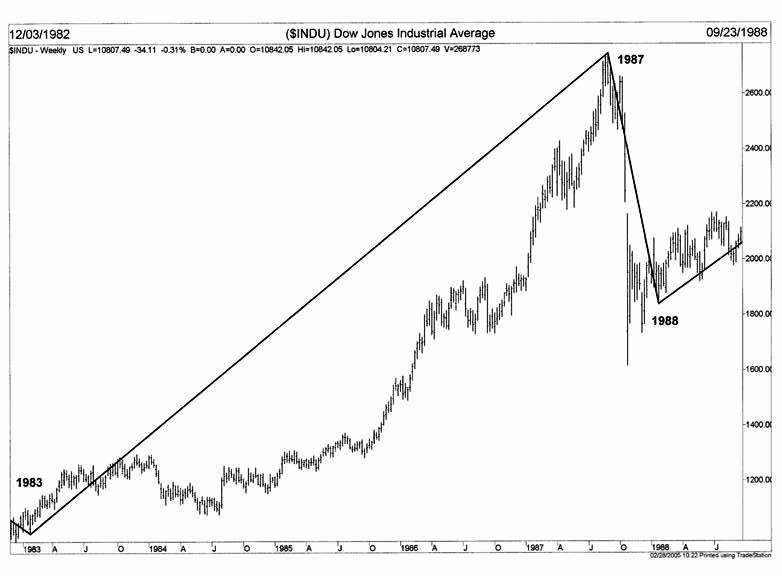The History of the Dow Jones
Post on: 8 Август, 2015 No Comment

In 1882, Charles Dow, Edward Jones, and Charles Bergstresser formed Dow, Jones, & Company. The company first produced a 2-page daily called The Customer’s Afternoon Letter in 1883.
The Letter was the first daily publication that displayed consolidated stock information and company earnings available to the public — This was unheard of at the time because companies wanted to keep their income information out of the public eye for fear of a take-over by their competitors. The Letter also made public company quarterly and annual financials statements.
This information was previously available only to the Wall Street elites. Suddenly, the common working man had access to the same company financial information as Wall Street’s top investors.
In 1884 Charles Dow created the first stock index called The Dow Jones Average. and it was made up of 11 companies — 9 railroad stocks, a communications company, and a steamship company.
By 1889, the Customer’s Afternoon Letter was renamed to The Wall Street Journal. Until the Securities Act of 1934, which required companies to report their quarterly and annual financial statements, and for nearly 50 years, the only place you could read this information was The Wall Street Journal.
The Dow Dozen
In 1896, Charles Dow created The Dow Jones Industrial Average. The average consisted of 12 railroad and industrial stocks.
The 12 original companies were:
- American Cotton Oil Company
- American Sugar Company
- American Tobacco Company
- Chicago Gas Company
- Distilling & Cattle Feeding Company
- Laclede Gas Company
- National Lead Company
- North American Company
- Tennessee Coal, Iron and Railroad Company
- U.S. Leather Company
- United States Rubber Company

The Dow Theory
Charles Dow believed that by carefully monitoring the highs and lows of his average, that he could predict future movement of the average, and get an idea of the overall health of business in general.
His findings were never completely published, but several admirers of Dow and his work later published their own work on Dow Theory; William P. Hamilton’s, The Stock Market Barometer (1922), Robert Rhea’s, Dow’s Theory Applied to Business and Banking (1938), and Robert M. Barnes’, The Dow Theory Can Make You Rich (1973), among many others.
The man who begins to speculate in stocks with the intention of making a fortune usually goes broke, whereas the man who trades with a view of getting good interest on his money sometimes gets rich., Charles Dow
The Math: Past and Present
When Charles Dow created the original average, to calculate the average he simply added up the stock prices of each of all 11 stocks, then he divided by 11. This was a true average of all the stock prices.
Dow didn’t foresee dealing with stock splits in his simple calculation. The problem is if a stock’s shares were split 2-to-1, or if a company would be replaced in the DJIA by another company, those actions would skew the average incorrectly to its historical level.
A stock split just changes the price of a stock, not the value of the company that split the stock. For instance, if you have 3 companies with stock prices at $10, $15, and $20, their average would be $15. But if the $20 stock is split 2-to-1, then the average of all the stocks would be $11.66.
To get around this, and to balance the average correctly, a Dow Divisor was created. To this day the Dow Divisor is not a divisor at all, but a multiplier of the sum of all the stock prices. The divisor has been adjusted many times throughout the history of the average, and is monitored closely to keep the Dow on track with historical numbers. At the end of 2008, the Dow Divisor was set at 0.125552709.
The Dow of Today
The DJIA currently has 30 stocks in its average. Over time the old railroad and industrial stocks have been replaced by consumer goods and technology stocks. The editors of The Wall Street Journal regulate which stocks are included in the average.
As of July, 2010, here is the list of the Dow Jones Industrial Average components:
For decades, the Dow Jones Industrial Average has been a world-recognized guage of business health and economic outlook. Tens of millions of investors and traders track its history, hoping to get a glimpse of what lies ahead.
Join C2Vtrader as a member to trade the S&P500 index, DJIA, Nasdaq, and many other NYSE ETF’s and stock plays. follow success.














